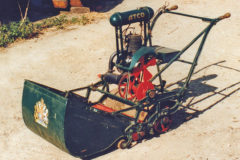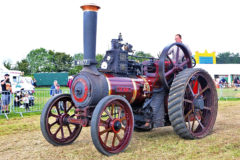The Royal Navy’s Black Swans
Posted by Chris Graham on 11th November 2021
Conrad Waters charts the success of the Royal Navy’s Black Swan class specialised convoy-defence vessels during World War II.

Royal Navy’s Black Swan: HMS Woodpecker pictured in December 1942, around the time of her delivery from William Denny & Brothers on the Clyde. The photo gives a good indication of the class’s general layout, with twin 4-inch gun mountings in ‘A’, ‘B’ and ‘X’ positions, and depth charges concentrated on the aft quarterdeck. Also prominent are the director on top of the bridge, which provided both high-angle and low-angle fire control, and the lantern mounted on the short lattice mast for her main surface search radar. Woodpecker participated in the destruction of six U-boats, but was, herself, sunk by U-256 in February 1944. She was the only ship of the famous 2nd Escort Group to be lost in action. (Crown Copyright)
Entering service just as World War II broke out, the Royal Navy’s Black Swan class sloops were to prove one of the most successful escort vessel designs of the conflict. The class traced its origins to a series of broadly similar vessels built during the inter-war years. They were essentially intended to protect convoys from submarine and aerial attack, releasing faster destroyers for service with the fleet. However, the ships could also perform secondary minesweeping and minelaying duties, as well as carry out a ‘presence’ function on overseas stations.
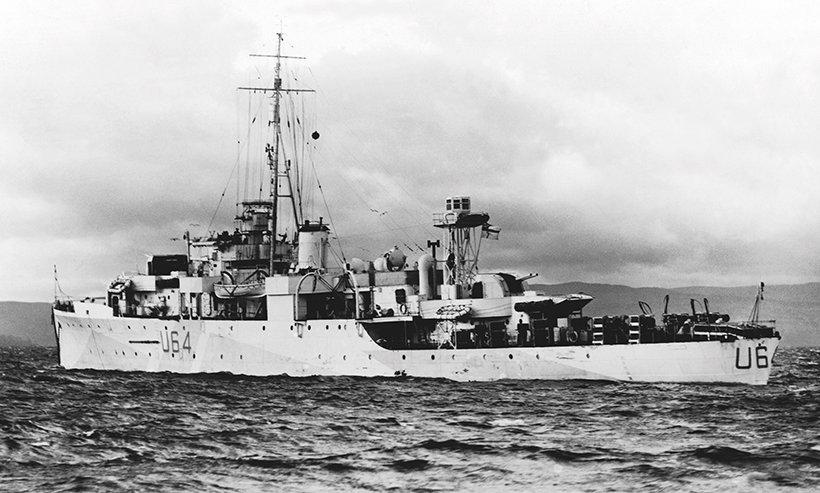
HMS Wren was laid down four days after her sister Woodpecker at the William Denny & Brothers yard, but she took a little longer to complete. She entered service in February 1943, when this photograph was taken. Although she was largely similar to her sister in configuration, a close comparison of the photos reveals various detailed differences, particularly with respect to close-range armament. Like Woodpecker, Wren spent much of her wartime service with the 2nd Escort Group, helping to sink five submarines. She survived the war, remaining in service until the mid-1950s. (Crown Copyright)
The first pair of Black Swans was ordered from what is now BAE Systems’ Yarrow yard, under the Royal Navy’s 1937 construction programme. A second pair had been authorised before World War II began, but it was the outbreak of hostilities which spurred production. A total of 33 had been completed before production ended, two of them for the Royal Indian Navy. The last members of the class weren’t delivered until after the war was over.
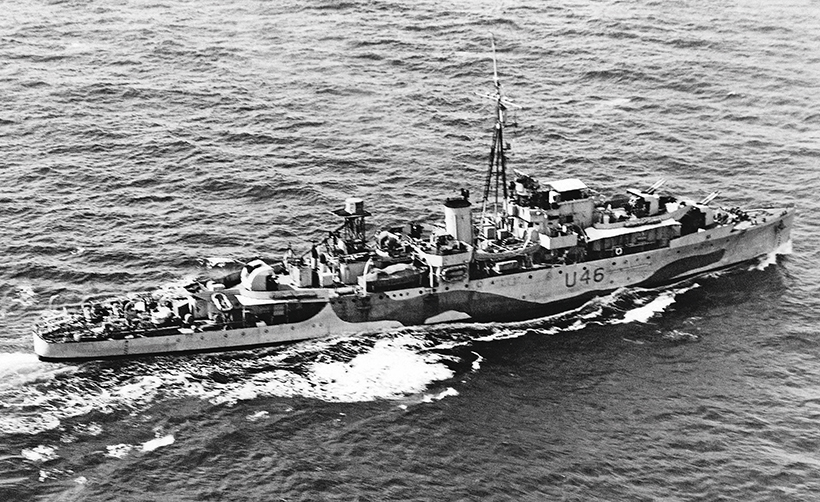
Although most of the Black Swan class were built for the Royal Navy, two vessels were constructed for Royal Indian Navy Service by Yarrow & Company, both commissioning in the second half of 1943. They spent most of their wartime service escorting convoys in the Indian Ocean, where this photograph of Kistna was taken on May 10th, 1944. Towards the end of the war, both ships supported the army’s advance against Japanese forces in Burma, adding coastal bombardment to the class’s many capabilities. (Crown Copyright)
Displacing around 1,300 tons in standard condition when initially completed, the Black Swans were compact but powerfully armed ships. Their main gunnery armament of six 4in QF (quick-firing) Mk.XVI guns in four HA (high-angle) twin Mk.XIX mountings, could be used for both anti-aircraft and anti-surface duties under the control of a centralised director. The use of stabilisers provided a solid platform for conducting engagements against enemy aircraft.
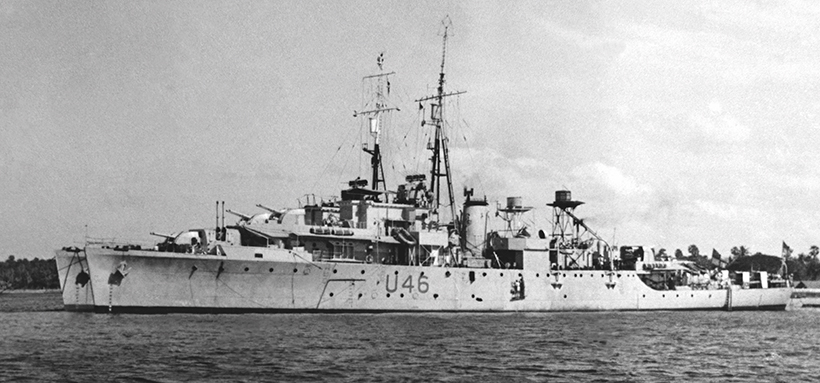
Another photograph of Kistna, this one taken at the Eastern Fleet’s main base at Trincomalee, towards the end of World War II. She is pictured outboard of Jumna, one of four sloops built to an earlier Royal Indian Navy order. Although they are sometimes considered to be members of the Black Swan class, most sources assert that this previous quartet belongs to the similar, but slightly older, Bittern class design. Kistna had a long career in Indian service, latterly as a training vessel, before eventually being scrapped in the early 1980s. (Author’s Collection)
The class was also equipped with one of the new, multiple pom-poms for close-range air defence. However, the ships’ real offensive potential was provided by their large outfit of depth charges. Steam turbine propulsion provided a maximum speed of close to 20 knots, fast enough to outrun virtually any enemy submarine.
Wartime service brought many modifications. The later ‘modified’ Black Swans were beamier and heavier than the initial ships, while armament was progressively enhanced as the war progressed. The introduction of radar and modern HF/DF direction-finding equipment proved vital in supplementing the ships’ ASDIC (sonar), for detecting enemy submarines.
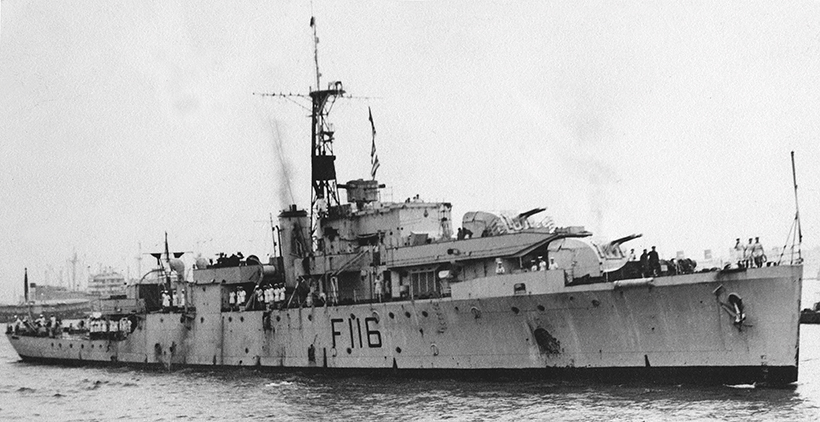
Another Clyde-built Black Swan, Amethyst, was completed by Alexander Stephen & Sons in November 1943. Although she sank the German submarine U-1276 off the Irish coast towards the end of the war, her main claim to fame was her central role in the Yangtze River incident of April to July 1949. Having been grounded and effectively held hostage after an attack by People’s Liberation Army forces in the later stages of China’s civil war, Amethyst eventually made her escape in a daring run to sea under the cover of darkness. This photograph, which shows the patched-over scars of the initial engagement, was taken at Hong Kong after her escape. Amethyst survived long enough to enjoy a starring role in the 1957 film ‘Yangtse Incident’, which told the story of these events. (Author’s Collection)
Battle of the Atlantic
The Black Swans gained most wartime fame for their role in the Battle of the Atlantic. They are probably best associated with the exploits of the 2nd Escort Group under the leadership of the legendary Captain FJ ‘Johnnie’ Walker. His command ship, Starling, was credited with the destruction of no fewer than 14 German U-Boats during the course of the war; a record for any Royal Navy warship.

The Black Swan class ships’ post-war service was active and varied. This photograph from 1948 shows HMS Snipe, one of two Denny-built ships completed in 1946, sailing among the ice flows of Antarctica. Contemporary reports state that Snipe travelled as far south as 64° 50’ while she was sailing off Victor Hugo Island during the course of the deployment. At that time this was the furthest point south reached by any steel-hulled Royal Navy warship. (Crown Copyright)
Although the Black Swans made their most notable contribution in the North Atlantic, they served in virtually every theatre of operation. For example, their role in escorting the Arctic convoys to Russia resulted in some of their most arduous fighting. Three of the six members of the class lost in the war – Kite, Lapwing and Lark – were destroyed during these missions in 1944 and 1945.
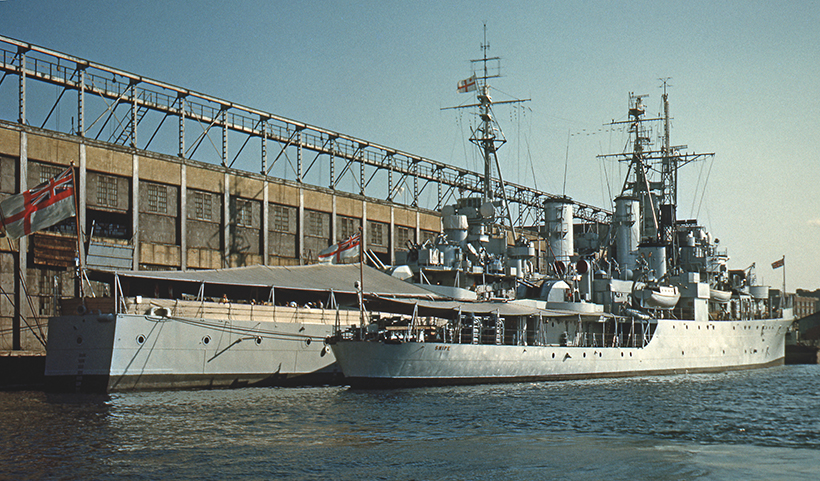
Another view of HMS Snipe, looking spick and span alongside the much larger cruiser Superb at an unknown American port, probably taken in the early 1950s. Although the class was a little too slow to counter the new post-war generation of fast submarines, it is interesting to note that she retains a large outfit of depth charges. After a period in reserve, Snipe made her final voyage to the shipbreakers in 1960. (Author’s Collection)
They also saw considerable action in the Far East, adding shore bombardments against Japanese forces in Burma to their many successes. Two of the class, Crane and Whimbrel, were among the allied ships present at Tokyo Bay, in September 1945, to witness the surrender ceremony that marked the end of the war.
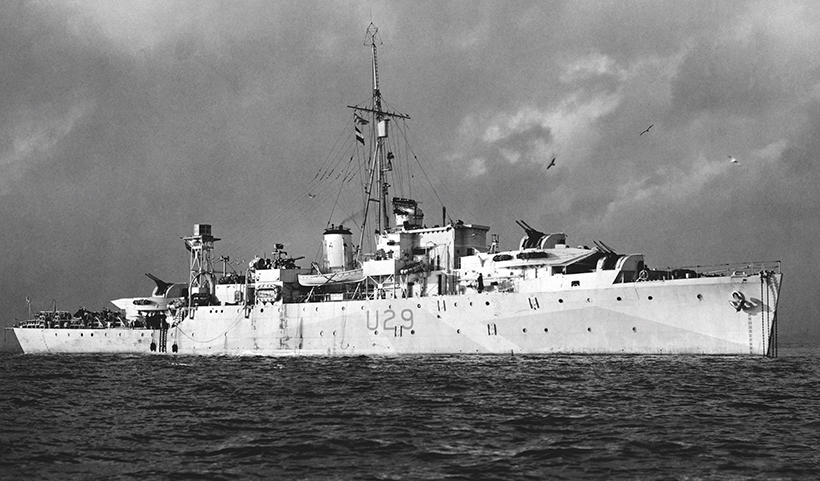
HMS Whimbrel, the longest-serving member of the class, on the River Clyde shortly after her delivery from Yarrow & Co in January 1943. She saw extensive use in wartime operations spanning the Atlantic, Arctic, Mediterranean and Far East, but she was not officially credited with any submarine kills. Although she was paid off from Royal Navy service soon after the end of the war, her subsequent purchase by the Egyptian government assured her of a lengthy career. (Crown Copyright)
The class remained busy in the post-war period. Amethyst earned the class further fame after escaping Chinese forces during the Yangtze incident. The last of the Royal Navy’s Black Swans departed service in the early 1960s, but others remained in service elsewhere for much longer. Ironically, these included a quartet handed over to Germany to help rebuild their Cold War forces. The last to remain in service was Whimbrel. She was transferred to Egypt in 1949, and remains alongside as a stationary hulk to the present day.
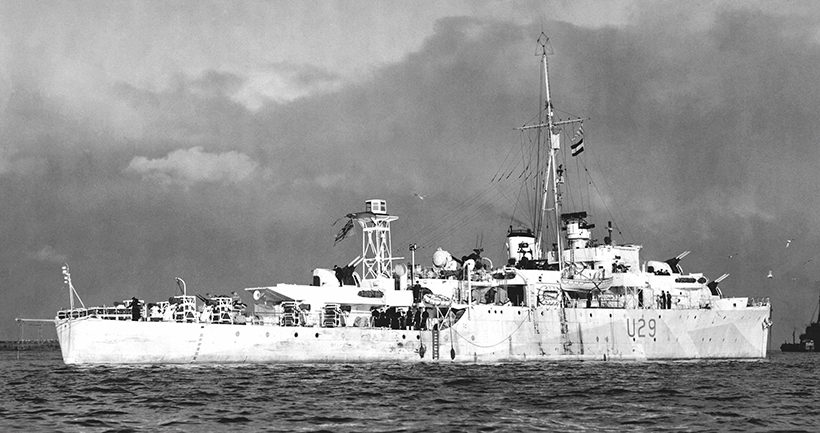
A parting view of the newly-built Whimbrel. Retired from active Egyptian Navy service in the 1990s, she survives to this day as a hulk at Egypt’s main naval base at Alexandria. A number of unsuccessful attempts have been made to preserve Whimbrel, the last survivor of a distinguished class, and it’s still not yet too late to save this historic ship. (Crown Copyright)
For a money-saving subscription to Ships Monthly magazine, simply click here



